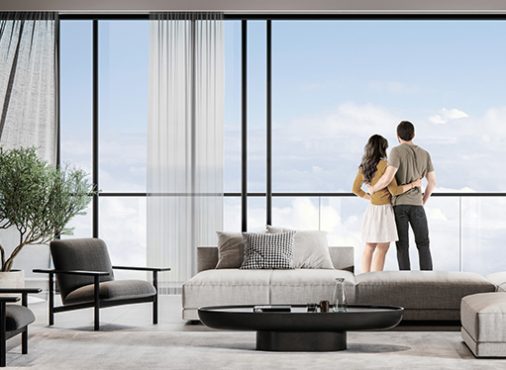Do you know what the difference between a built-up area and super built-up area is? Perhaps not! And every broker/agent you’re speaking with about your dream home is throwing jargon your way. Knowing about this common jargon can help you make better decisions about your new property in mumbai, and you can make a more informed choice! So about time you put your learning hats on because we’re about to decode 6 common real estate terminologies for you!
1. Adjustable-Rate Mortgage
The concepts surrounding mortgages can get quite overwhelming, however, it is a common instrument for all house buyers. You can purchase your dream house without waiting for years to save money for it. The adjustable-rate mortgage concept talks about the type of loan where the interest rates vary during the entire tenure period of the loan. It may vary according to the forces of the market, it may get lower in one period or higher. You can pre-determine the interval at which this alteration takes place.
2. Fixed-Rate Mortgage
This is another concept related to mortgages and as its name suggests, it is a bit different from the mortgage type explained above. You receive a constant rate of interest here, which remains this way irrespective of how the market is performing. In unfortunate cases, you might have to pay a higher rate of interest even if the market goes down throughout the tenure of the loan.
3. As-is
A property that is termed ‘as is’ usually refers to the seller’s wish to not perform the repairs. This usually indicates that the pricing of the house will be lower than the market pricing of the house. However, if something happens to the property before the buyer moves in, the seller has to incur the costs to bring it back to the as is condition. The seller might also relieve the obligation of the buyer from purchasing the property or refund any additional costs that have been borne by the buyer.
4. Cash Reserves
Before you lock in on a house, you need to provide a comprehensive statement about your finance and your ability to pay the price of the property you are about to purchase. You also need to provide a down payment and closing costs to lock in the property. Cash Reserves are the specific amount of money that gets leftover after making these aforementioned payments. This is not a necessary requirement and differs from seller to seller.
5. Conventional Sale
A conventional sale indicates a smoother transaction than a non-conventional sale. It usually means that the owner owns the property outright- he/she has no mortgage remaining. It could also indicate that the owner owes less on their mortgage than what the current market value of the property is.
6. Built Up Area
Built-up area refers to the total area comprising the carpet area and the thickness of the walls. The balcony area is also counted in this. It is almost 70-80% of the super built-up area. To calculate the built-up area, you can do a simple calculation-
Built-Up Area = Carpet Area+ Area of walls+ Area of balcony.
The super built-up area, on the other hand, is the space occupied by common areas like lobby, elevator, staircase, shafts, etc. The loading factor is determined by applying a multiplier to the carpet area, and many developers in mumbai will price the apartment based on this loading factor.
Due to RERA, some changes have now been made to the definitions of carpet area. It is now defined as the net usable floor area of an apartment, excluding the area of the external walls, or areas under service shafts or balcony area. However, it includes the area covered by the internal partition walls of the apartment. Additionally, developers have to disclose the exact measurement of the flat, and what part of the flat is included in the carpet area, and what part is taken by the verandah and the service areas. Due to this, the onus will now be on the developer to use intelligent design and efficiency to build their units. So now, buyers will know what they are getting into. They will no longer get a 600 sq ft apartment, while thinking that they are getting an 800-900 sq ft apartment.







